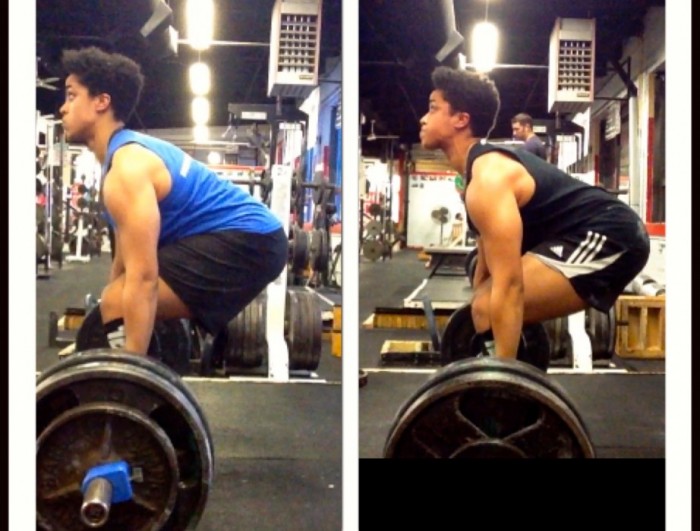
2 weeks out and feeling great! As promised (to myself and to anyone reading this as a way to be held accountable), I've been dedicating at least 20minutes daily to Mobility Work. As suggested by my training partner (who is my go-to guy when it comes to mobility/injury prevention/fixing things that don't feel right), I've taken a "triage" approach. Focusing on things that need the most immediate attention, and then working from there. This has worked out really well for me, because as I've gotten more mobility in my hamstrings and hips-- everything else seems to be functioning better as a result (apparently everything is connected-- who knew?! Things they don't teach us at Harvard Law...). In all seriousness though, it's one of those things that I knew, and yet never took seriously. I think that this sort of willful ignorance (for lack of a better term) is something we get caught up in a variety of contexts. The example that comes to mind is getting lazy with technique, even though we know that better technique leads to more efficient lifting-->which leads to bigger lifts and less injury.
I want to note that I'm not spending hours on end foam rolling or mobilizing, or going through every single mobility drill detailed in Supple Leopard. I'm approaching my mobility work in a purposeful, and systematic way-- just like I do my training. Identifying what needs improvement, being deliberate in coming up with a plan to improve, and then being consistent in executing that plan and adjusting as I progress. As a result, "my" squat position as returned (being able to stay more upright, and utilize my hamstrings and glutes as I sit back), and my beloved Hip Hinge is back to what my training partner referred to as "Vintage Mickey" (i.e. before I got all tight, and my Deadlift technique got out of whack). In the feature image, you'll see the Blue Tank Deadlift vs. the Black Tank Deadlift-- while the Black Tank isn't terrible, I was more bent over than is optimal for me and as a result was slower off the flower and had to "work" more to move the weight. Whereas in the Blue Tank deadlift, and as you'll see in the video below, the weight felt much lighter and it just felt more natural/efficient. I didn't feel like I was fighting my body in an effort to get the weight up, it just moved like it was supposed to (clearly I was purposeful in getting tight, getting air, etc. but it was a more natural movement for me as opposed to "fighting" to get into position).
2/18 (Belt-less work)
| Exercise: | Pin Squats | Exercise: | Touch and Go Bench | Exercise: | CG to 3 board | ||||||
| Set # | Load | Reps | RPE | Set # | Load | Reps | RPE | Set # | Load | Reps | RPE |
| 1 | 225 | 2 | 6 | 1 | 135 | 6 | 6 | 1 | 135 | 7 | 6 |
| 2 | 245 | 2 | 7 | 2 | 155 | 6 | 7.5 | 2 | 155 | 7 | 7 |
| 3 | 265 | 2 | 7.5 | 3 | 175 | 6 | 9.5 | 3 | 175 | 7 | 7.5 |
| 4 | 285 | 2 | 8 | 4 | 165 | 6 | 8 | 4 | 175 | 7 | 8 |
| 5 | 285 | 2 | 8.5 | 5 | 165 | 6 | 8 | 5 | 175 | 7 | 8 |
| 6 | 285 | 2 | 8.5 | 6 | 6 | 175 | 7 | 8 | |||
| 7 | 285 | 2 | 8.5 | 7 | 7 | ||||||
| 8 | 8 | 8 |
[youtube= https://www.youtube.com/watch?v=JbCZQLrtzSM]
2/19 (Belt-less work)
| Exercise: | 2ct Pause Deadlift | Exercise: | 2board Press | Exercise: | T-Bar Rows | ||||||
| Set # | Load | Reps | RPE | Set # | Load | Reps | RPE | Set # | Load | Reps | RPE |
| 1 | 315 | 2 | 6.5 | 1 | 175 | 5 | 7 | 1 | 45 | 7 | 6.5 |
| 2 | 335 | 2 | 7.5 | 2 | 185 | 5 | 8 | 2 | 70 | 7 | 8 |
| 3 | 365 | 2 | 8 | 3 | 195 | 5 | 9 | 3 | 70 | 7 | 8 |
| 4 | 365 | 2 | 8 | 4 | 185 | 5 | 8 | 4 | 70 | 7 | 8 |
| 5 | 365 | 2 | 8 | 5 | 5 | 70 | 7 | 8.5 | |||
| 6 | 365 | 2 | 8 | 6 | 6 | ||||||
| 7 | 365 | 2 | 8.5 | 7 | 7 |
[youtube=https://www.youtube.com/watch?v=Oh41JzWxMSU]








